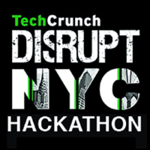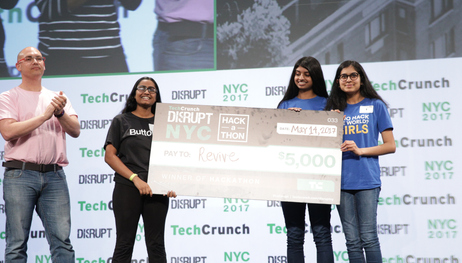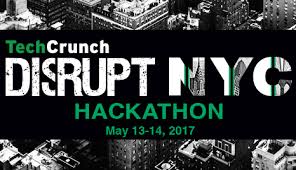Disruptive Open Innovation Event Yields Novel ADHD Diagnosis Tool
Published Dec-04-17Breakthrough:
A virtual reality tool to help speed up diagnoses of attention deficit hyperactivity disorder (ADHD).
Company:
reVIVE/TechCrunch, United States
The Story:
 For one weekend in May 2017 Pier 36 in New York was a feverish hub of creativity and imagination as hundreds of developers, engineers and innovators took part in the Disrupt NY 2017 hackathon organized by TechCrunch. Their brief was to come up with something awesome and new within 24 hours.
For one weekend in May 2017 Pier 36 in New York was a feverish hub of creativity and imagination as hundreds of developers, engineers and innovators took part in the Disrupt NY 2017 hackathon organized by TechCrunch. Their brief was to come up with something awesome and new within 24 hours. Many were inspired by the success of participants to previous Disrupt hackathons such as the mobile group messaging app GroupMe. It was created in just one night at TechCrunch Disrupt 2010. Following this open innovation event, the founders raised more than $10 million in venture capital and the app was eventually acquired by Skype for $80 million.
Disrupt NY Hackathon
Back to the 2017 event and the 750 or so participants formed themselves into numerous teams. The hackathon may have been short-lived but it forced teams and individuals to work nimbly, push boundaries, think laterally and focus intently on providing solutions to the problems they wanted to solve.
When they were done, 89 teams took to the stage to present their one-minute demos to try and wow the judges and an audience of thousands.
The overall winner was reVIVE, a virtual reality solution for diagnosing ADHD, built by three high school students. Currently, there is no simple test to determine whether someone has ADHD. To make a diagnosis involves a physical examination and a series of interviews and reports. The process can take several months and it can cost patients several thousand dollars.
The reVIVE tool is composed of three different tests that gauge motor skills, reaction time and sustained concentration. One test sees users trying to navigate their way through a maze, and a scoring system measures how they're doing. This will allow medical specialists to gain a clearer picture of what is going on with each person within a matter of minutes.
"We really wanted to quantify ADHD diagnoses," said Aksaya Dinesh, one of the team members. "When you’re immersed in a 360 environment, patients experience the environment as if they’re really there."
The intent of the team is to provide therapists with a useful telemedicine tool not replace them. For their ingenious endeavours, they were awarded a check for $5,000.
The hackathon's runners-up were:
CodeCorrect by individual hacker Pat Needham. He developed a way for developers to find solutions to common errors in their code.
Waste Not, an app that scans your grocery bill and notifies you before your food expires. The aim is to cut down on the amount of food that is wasted.
The Power of Collaborative Innovation
These days many companies understand the pitfalls of developing in a vacuum. By capitalizing on different backgrounds, experiences and viewpoints through open innovation approaches they can solve critical issues, develop new products and refine and improve existing offerings often at a lower cost. Successful hackathons such as Disrupt NY demonstrate well how this can be achieved.
Next Story »


